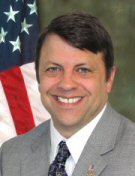Speakers
3 speakers
Date & Time
Jun 2, 2022 2:00 p.m. ET
Webinar
Date: On demand
Duration: 1 hour
Cost: No Fee
This time, the renewed focus on federal shared services isn’t just about the technology.
The terms human-centered design and customer experience have crept into the ever-changing approach to providing agencies with back-office shared services.
Jeff Schramek, the deputy commissioner for fiscal accounting and shared services at the Bureau of Fiscal Service in the Treasury Department, said his goal to further evolve financial management, human resources, acquisition and travel shared services is a combination of maturing the services his organization provides and understanding the customers they serve in a more specific way.
“We have employees working for us that have the experience of working our systems, the efficiency and scalability of our programs, with the goal of being able to provide timely data and information to the agencies so they can do their work and make their decisions. So it’s really now becoming more about standardization,” Schramek said on Ask the CIO. “But we also want to know what our customer experiences through the whole process. We generally get 90% customer satisfaction in our services offerings each year, but customer service and actually customer experience are a little different. We want to make sure we’re bringing the agencies in early whenever we’re trying something new or bringing in a new system.”
Bringing in the customer early on
Understanding what the customer wants isn’t a new concept to shared services providers. In 2015, the General Services Administration launched the Unified Shared Services Management (USSM) office and added a playbook that emphasized the providers listen more to the voice of the customer.
The challenge, however, has been not just to listen to agency customers, but implementing real changes to the systems and offerings.
Schramek said the change the Fiscal Service is going through is to take a human-centered, agile design approach.
“We are bringing the customer in early to gauge what is it that they like about the system? What don’t they like about the system? What can we change?” he said. “We’re focusing our skilled employees who do business process reengineering and automation to focus on those [13 service] areas. Just recently, we did a review of the commercial accounts receivable organization, and what I like about what I heard through that process is this review was done and came up with about 10,000 labor hours of savings, and possibly over $100,000 of cost avoidance because sometimes you still use those people to do something else, but they can get off the manual processes. Also what I like about this business process servicing reengineering groups that we’re doing is they actually came back and told us where you can get your savings is using a bunch of different things. So it’s not just one tool. We are incorporating a robotic process automation bot into our reporting processes, that’s going to save 5,000 hours.”
Schramek said using RPA and other automation tools will reduce the burden on their customers and increase efficiency of the Fiscal Service’s services.
87 agency customers and growing
He said in one instance, automation will reduce the manual process of answering agency emails, of which the office gets more than 100,000 a year.
“That’s going to save over 3,500 hours if we implement that. We’ve got an automation tool in our accounting software that is kind of like a bot and that you incorporate it for reporting. That’s going to save about 1,400 hours a year,” Schramek said. “We have a lot of people who come in and start working for us, and we need to train them. Sometimes that requires a couple of weeks’ effort. There’s some training that you just need once a year so we’re building an automated video to replace some of that.”
Using automation and bots to improve financial services or human resources offerings is part of the Fiscal Service’s broader plan to improve customer experience.
And the Administrative Resource Center has plenty of customers that they hear from.
Schramek said ARC provides 87 agencies from small commissions and independent agencies to large cabinet level departments with, ranging from the departments of Treasury and Housing and Urban Development to the Nuclear Regulatory Commission to the latest one coming on board this year, the Office of Personnel Management, a range of services from financial management to HR to acquisition to travel support services. He said about 50 agencies use their financial management shared services while 29 use some combination of the other offerings.
“We’re actually just finishing up a technology and data roadmap that we’ve created. What this really does is it looks at all four of our business lines, the systems in the software that we use in those four business lines, and where is the maturity level of those systems,” he said. “The good news for us from what we’re looking at is we don’t have too many that we have to really move off of and sunset. But there are a number, especially when they come out in the queue somehow that we’re going to need to make decisions: Do we stay on the version we’re on right now or do we do the investment to go and get the additional cloud based software services you can get on that? Those are the things we’re planning for.”
Data analytics on the horizon
Schramek added the roadmap also opens the door to bring more innovation into the shared services offerings. He said ARC will share their modernization and innovation plans with their customers whether it’s through the specific roadmap or through other ways is still to be determined.
Part of the roadmap is how ARC will bring more analytics to its customers. Schramek said currently his organization is providing data back to customers based on individual services whether financial management or HR.
Where ARC would like to go, he said, is for customer agencies to obtain data from all four business lines as they need it as well as provide analytics of that data.
“We can provide that information and provide them dashboards and some information back that then they can make decisions,” Schramek said. “I imagine some of our smaller commissions and agencies are probably going to use the dashboard and analytics we provide, whereas HUD and OPM would likely want to be able to get to the data and bring back to their analytics tools. But I think the data aspect is where we are going so we can give our customers timely data to the decision makers.”
Learning Objectives:
- Shared Services Provided by ARC
- Utilizing Automation in the Shared Services Realm
- Network Modernization
- Data Examination

Speakers

Jeff Schramek
Deputy Commissioner, Fiscal Accounting and Shared Services, Bureau of the Fiscal Service

Wayne Bobby
Vice President, Workday Federal

Jason Miller
Executive Editor, Federal News Network
Please register using the form on this page.
Have questions or need help? Visit our Q&A page for answers to common questions or to reach a member of our team.
